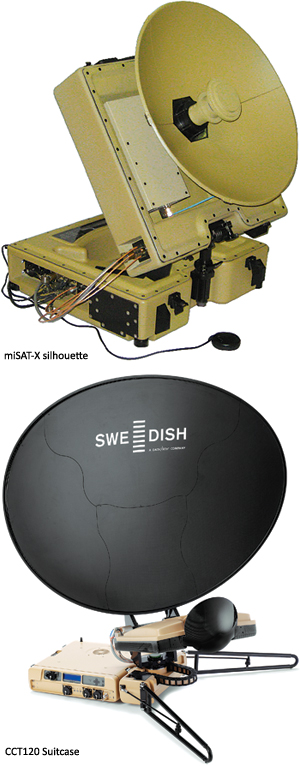INDIAN ARMED FORCES CHIEFS ON OUR RELENTLESS AND FOCUSED PUBLISHING EFFORTS

The insightful articles, inspiring narrations and analytical perspectives presented by the Editorial Team, establish an alluring connect with the reader. My compliments and best wishes to SP Guide Publications.

"Over the past 60 years, the growth of SP Guide Publications has mirrored the rising stature of Indian Navy. Its well-researched and informative magazines on Defence and Aerospace sector have served to shape an educated opinion of our military personnel, policy makers and the public alike. I wish SP's Publication team continued success, fair winds and following seas in all future endeavour!"

Since, its inception in 1964, SP Guide Publications has consistently demonstrated commitment to high-quality journalism in the aerospace and defence sectors, earning a well-deserved reputation as Asia's largest media house in this domain. I wish SP Guide Publications continued success in its pursuit of excellence.
- Appointments Committee of Cabinet approves one-month extension in service of Chief of the Army Staff
- Admiral Dinesh K. Tripathi assumes Command of the Indian Navy as 26th Chief of the Naval Staff
- Prime Minister witnesses 'Bharat Shakti' – a Tri-Services Firing and Manoeuvre Exercise in Pokhran, Rajasthan
- Interim Defence Budget 2024-25 — An Analysis
- Union Defence budget 2024
- Prime Minister Modi Commemorates Indian Navy Day in a Grand Ceremony
New SATCOM capabilities from communications innovator Rockwell Collins: More flexible, more powerful, and more portable

As SATCOM technology continues to evolve rapidly, the Rockwell Collins family of mobile CommuniCase® SATCOM terminals minimises the risk of technological obsolescence with a flexible modular design.
CCT SATCOM terminals from Rockwell Collins use a modular architecture that allows the modems and transceivers to be swapped out with different products in the CCT family, from suitcase terminals to flyaway terminals.
When technologies change, the architecture permits the replacement of existing modems and transceivers with the latest technology, or with custom-designed modules in the same form factors. Swappable modules include the antenna system, transceiver, controller, network processor, power supply and software.
The more flexible designs of CCT SATCOM terminals provide the opportunity to ‘future-proof’ these terminals. They address a major concern in procurement of SATCOM terminals or any hardware that it will become obsolete within two or three years due to technological change. With a CCT terminal from Rockwell Collins, only a new modem, transceiver or other swappable module needs to be purchased.
Rockwell Collins’ technological pursuits extend beyond SATCOM, however SATCOM is a strong area of interest for the company. In India, technological capabilities are advanced and government interest in expanding SATCOM for defence is growing. Rockwell Collins’ widely-used SATCOM technologies are among the most proven and advanced in the industry.
The CCT family of terminals features auto acquisition and the capability to utilise X-, Ku- or Ka-band based on customer requirements. They feature a modular design concept that allows customers to select and combine components in order to customise key characteristics of their SATCOM systems for mission, portability, speed and budget requirements.
Interchangeable CCT modules help to maximise the value of a customer’s technology investment, reduce the logistics load and lend flexibility to adapt to future needs.
CCT products include the SWE-DISH® CCT120 Suitcase®, with an efficient 1.2-metre by 0.84-metre Gregorian offset antenna. The antenna and feed system achieve low loss and up to 20 Mbps data speeds. The CCT120 is also available in a drive-away model.
Set-up speed can be critical in defence applications. With a time to air of 5 to 10 minutes, the CCT120 is the quickest-to-air terminal in the world and is also among the fastest to tear down. Changing modems can be accomplished in only three minutes.
The smallest, most portable Rockwell Collins terminal is the miSAT™. The miSAT man-portable SATCOM terminal provides secure and non-secure data, voice and video in a briefcase-size package that can be stowed in the overhead compartment of an airplane. Since it weighs under 18 kilograms, the miSAT can be deployed on the ground, on window sills, on balconies, on vehicle roofs and on rooftops.
Setting up the miSAT terminal takes less than five minutes for a person with no SATCOM experience, by simply opening the case, connecting the reflector pieces and pointing the antenna using simple instructions provided on an integrated display. It provides T1 speed, as well as everything over IP connectivity.
Rockwell Collins sees many opportunities to serve customers beyond their equipment needs. The company’s global field support services include training, technicians, depot-level spares, logistics support and a network operations centre. The centre provides 24/7 access to expert technicians, trouble ticketing and warranty support.
To help customers manage SATCOM networks, Rockwell Collins offers the SATCOM MaxView® Management and Control Software. MaxView is a cross-platform software suite for network management, control and automation. Intuitive and easy to use, it is used at over 4,000 sites in 40 countries after more than 13 years in the market.
Rockwell Collins in India employs more than 500 people at its state-of-the-art India Design Centre in Hyderabad, which is dedicated to hardware and software development. A growing India presence also includes staff in the company’s New Delhi office, which opened in 2011 to provide business development, programme management, systems engineering and other support.





